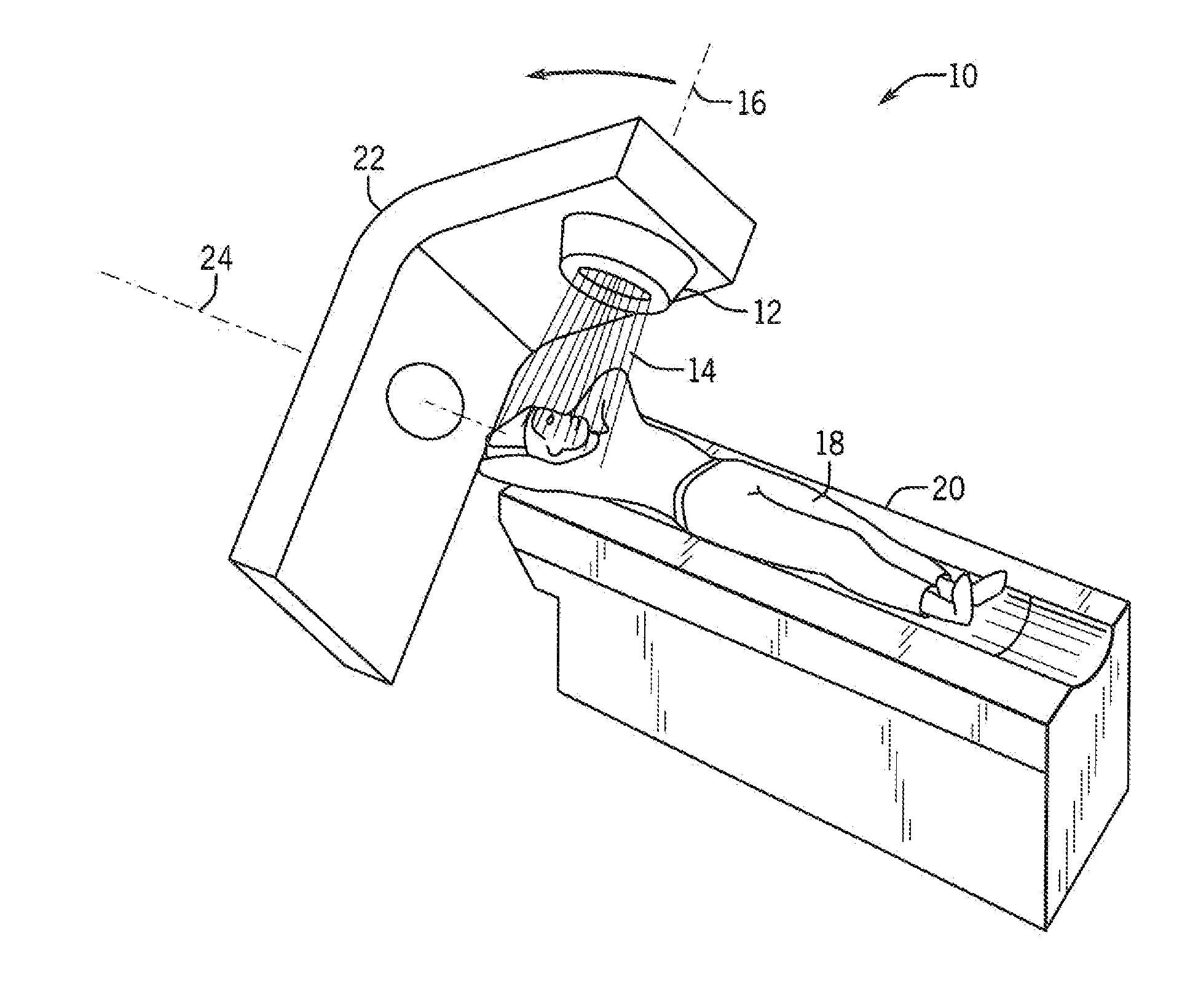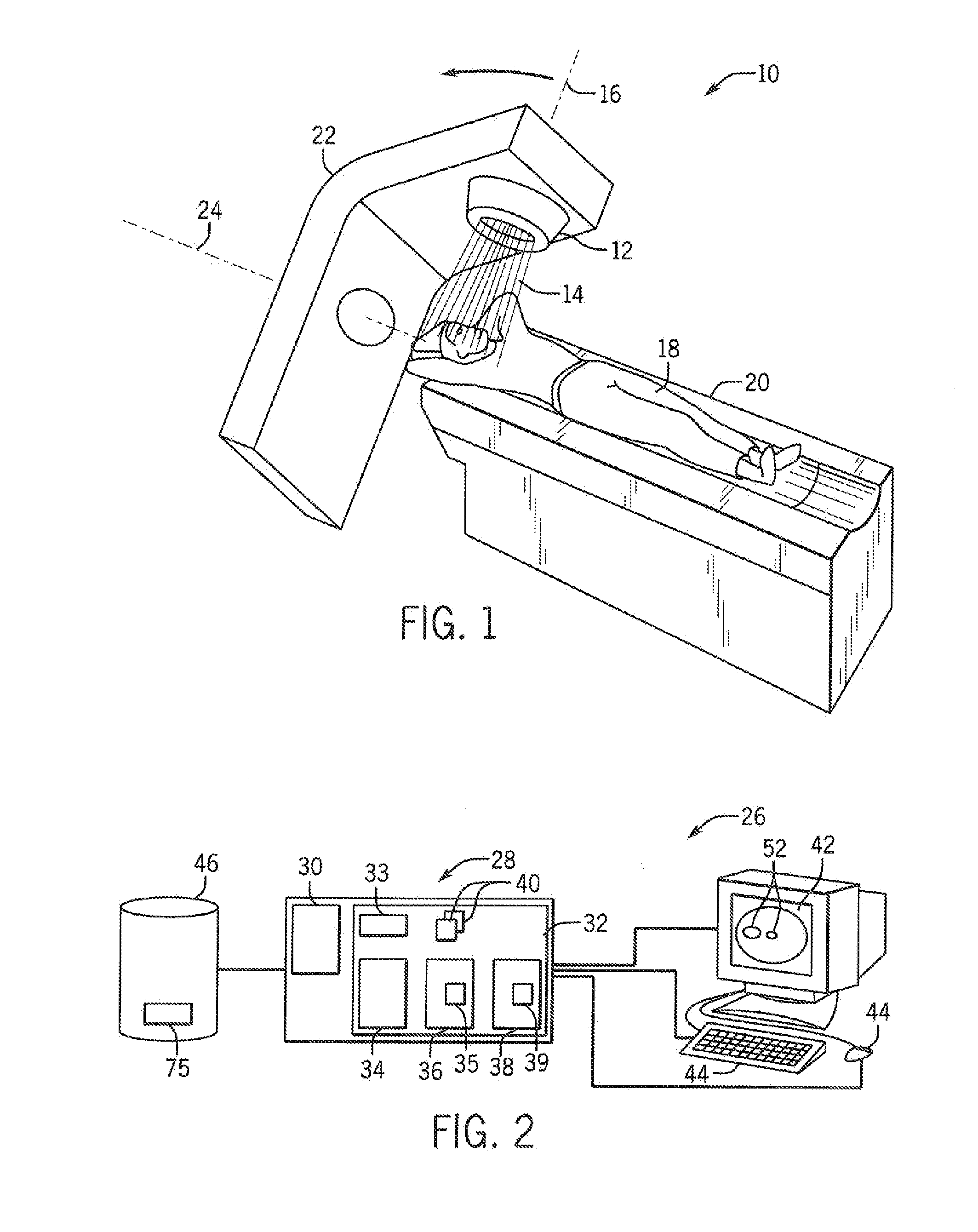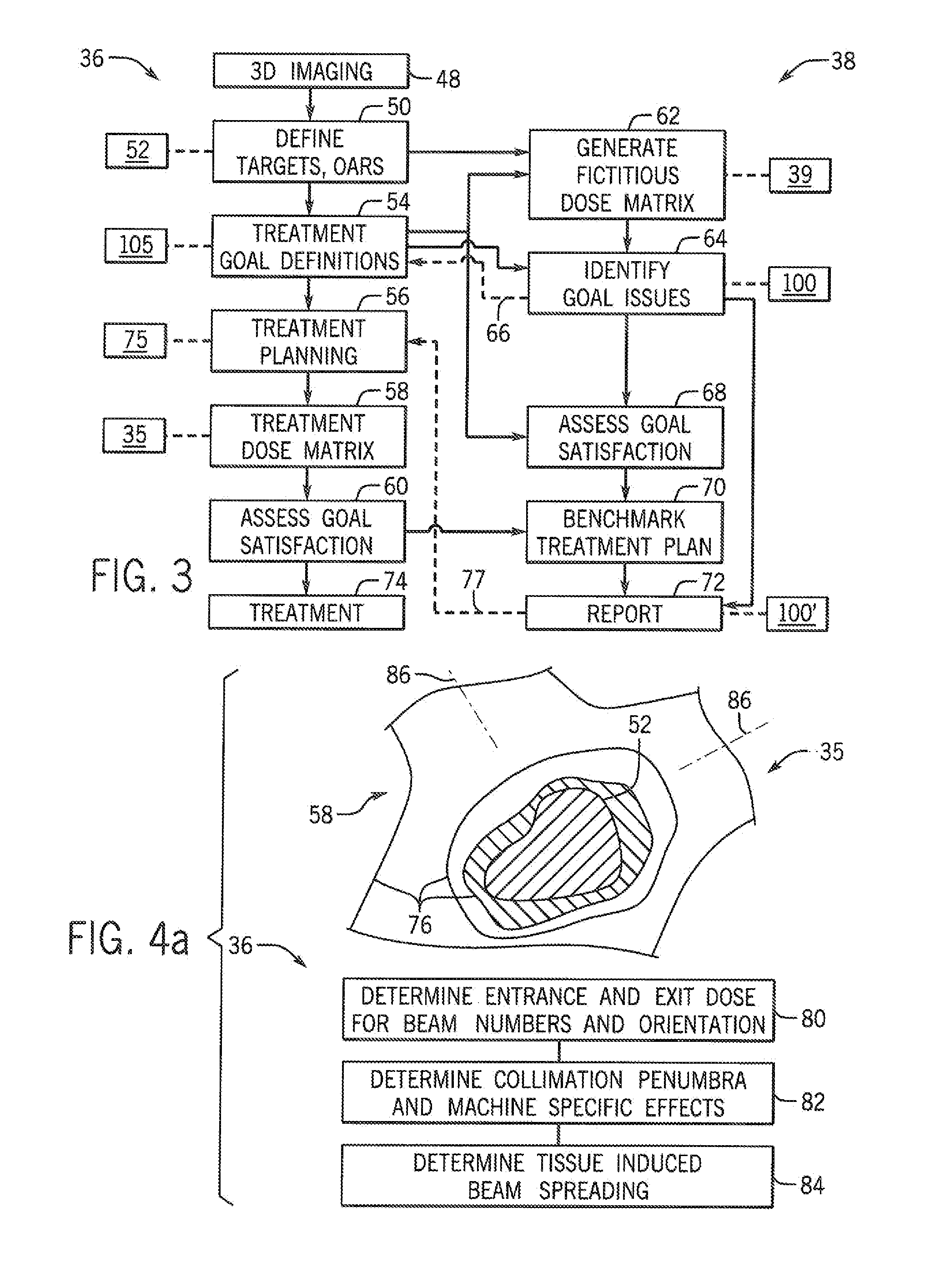Benchmark system for radiation therapy planning
a technology of radiation therapy and benchmark system, applied in the field of medical radiation therapy, can solve the problems of preventing the practical reuse of standard, requiring substantial input from a skilled human planner, and the ineffectiveness of automated systems for developing clinical radiation therapy plans, so as to reduce the influence
- Summary
- Abstract
- Description
- Claims
- Application Information
AI Technical Summary
Benefits of technology
Problems solved by technology
Method used
Image
Examples
Embodiment Construction
[0049]Referring now to FIG. 1, a radiation therapy machine 10 may provide, for example, a radiation head 12 projecting one or more intensity control radiation beams 14 along an axis 16 toward a patient 18. The patient may be supported on a table 20 that may be translated and rotated to change the position of the patient 18 with respect to the beams 14. In addition, the radiation head 12 may be mounted on a rotatable gantry 22 rotatable about an axis 24 to move axis 16 to direct the radiation beam 14 at a variety of angles with respect to the patient 18. The radiation head 12 may include an internal collimator or multi-leaf collimator to controlled either or both of the outline or shape of the radiation beam 14 in cross-section and the intensity of all or portions of the radiation beam 14.
[0050]The treatment planning process, in its simplest expression, produces a clinical radiation therapy plan defining a set of stations at which the radiation beam 14 will be applied to the patient ...
PUM
 Login to View More
Login to View More Abstract
Description
Claims
Application Information
 Login to View More
Login to View More - R&D
- Intellectual Property
- Life Sciences
- Materials
- Tech Scout
- Unparalleled Data Quality
- Higher Quality Content
- 60% Fewer Hallucinations
Browse by: Latest US Patents, China's latest patents, Technical Efficacy Thesaurus, Application Domain, Technology Topic, Popular Technical Reports.
© 2025 PatSnap. All rights reserved.Legal|Privacy policy|Modern Slavery Act Transparency Statement|Sitemap|About US| Contact US: help@patsnap.com



